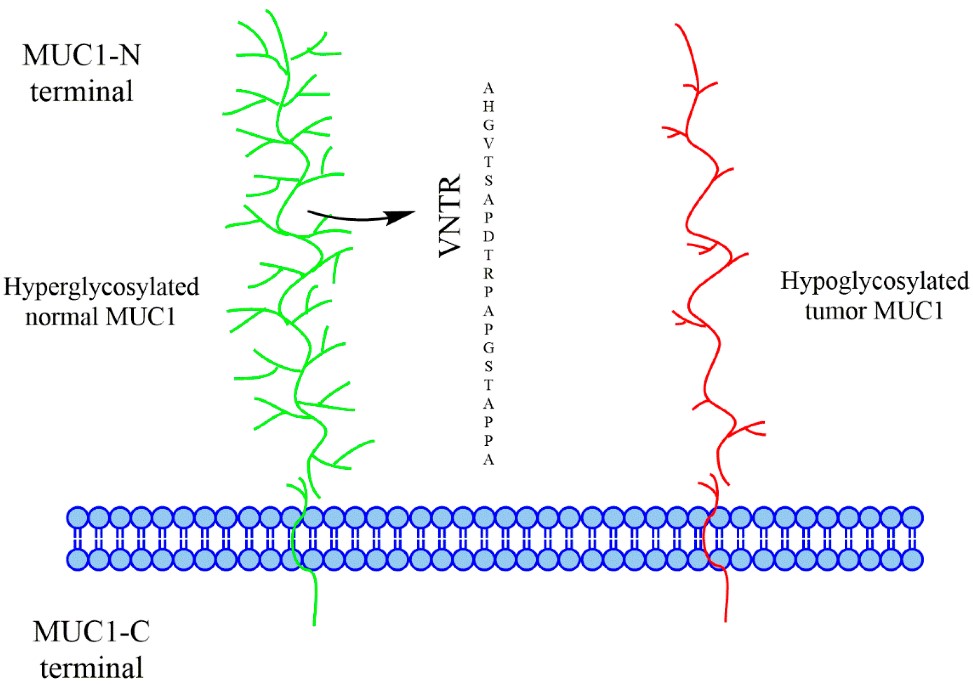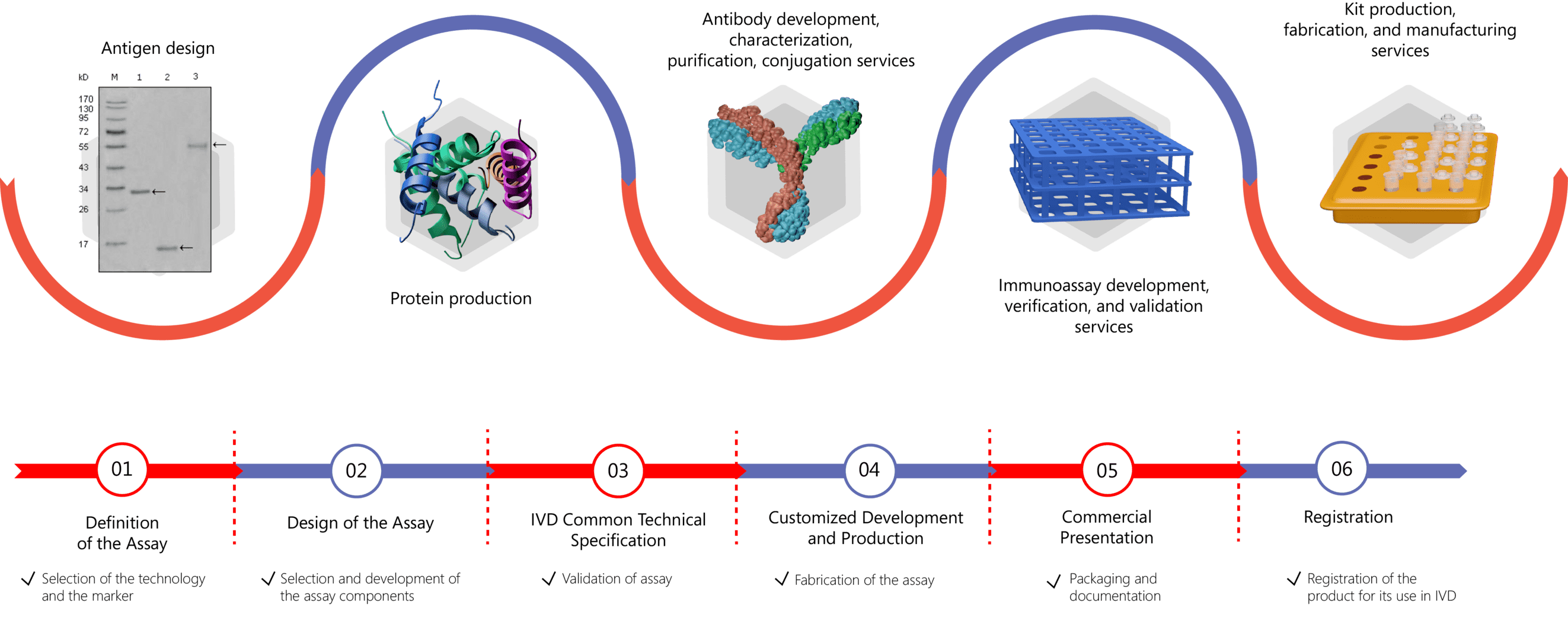As a preeminent contract research company, Creative Biolabs offers high-quality in vitro diagnostic (IVD) antibody & immunoassay development services. Especially, with our versatile IVD platform, we are proud to offer customized services to develop immunoassays from scratch to commercial IVD kits targeting CA15-3, a diagnostic biomarker of breast cancer.
Introduction to CA15-3
CA15-3, also known as Cancer antigen 15-3, is a transmembrane glycoprotein antigen. It is derived from MUC1 (Mucin1, cell surface-associated). MUC1 belongs to the mucin family and is expressed on the surface of most epithelia such as mammary gland, lung, pancreas, and female reproductive tract. The structure of MUC1 is characterized by a long N-terminal extracellular region containing a VNTR unit, a short C-terminal cytosolic region, and a transmembrane sequence. O-linked glycosylation happens on serine or threonine residues in every tandem repeat region of VNTR. Furthermore, normal cells display advanced glycosylation, while in cancer cells, hypo glycosylation or abnormal glycosylation are observed. The extracellular region mediates the binding of pathogens to act a protection function, while the intracellular region participates in cell signaling way.
 Fig.1 Difference between normal mucin 1 (MUC1) and tumor-associated MUC1.1
Fig.1 Difference between normal mucin 1 (MUC1) and tumor-associated MUC1.1
CA15-3 As A Diagnostic Tool for Breast Cancer
CA15-3 is one of the Food and Drug Administration (FDA)-approved tumor markers for monitoring breast cancer. CA15-3 as a tumor maker can transfer to the blood, and the plasma level of CA15-3 is closely related to the progression of breast cancer. Studies have demonstrated that CA15-3 is unsuitable for early detection due to its low expression and lack of sensitivity in breast cancer but it can serve as a biomarker to predict therapeutic response in advanced breast cancer patients. If the levels of CA15-3 tend to decrease, then it indicates that the treatment is working. However, if the levels of the marker are stable or increasing, means that the treatment is not working, and the cancer is not responding to the treatment or the cancer is recurring. In conclusion, the tumor marker CA15-3 is not only can be used in the diagnosis of breast cancer, but it also can be used for screening of breast cancer and monitor of the efficiency of the treatment. Exceptionally, increased levels of CA15-3 can be seen in other conditions such as endometriosis, pelvic inflammatory, and pregnancy.
IVD Antibody & Immunoassay Development Services Provided by Creative Biolabs
With years of experience and advanced technology, Creative Biolabs can provide a full range of high-quality and cost-effective biomarker-specific antibody development services. We can also offer antibody pairing, antibody conjugation, and diagnostic immunoassay development services of different formats, including ELISAs, lateral flow immunochromatographic assays, immuno-PCR, etc. Please click the links below for more information:
- IVD Antibody Development
- Antibody Pair Development
- Antibody& Protein Conjugation
- IVD Immunoassay Development

Please feel free to contact us for more information and discuss your project needs.
Reference
- Hossain, Md Kamal, and Katherine A. Wall. "Immunological evaluation of recent MUC1 glycopeptide cancer vaccines." Vaccines 4.3 (2016): 25. Mechanisms of breast cancer metastasis. Distributed under Open Access license CC BY 4.0, without modification.
For Research Use Only.

